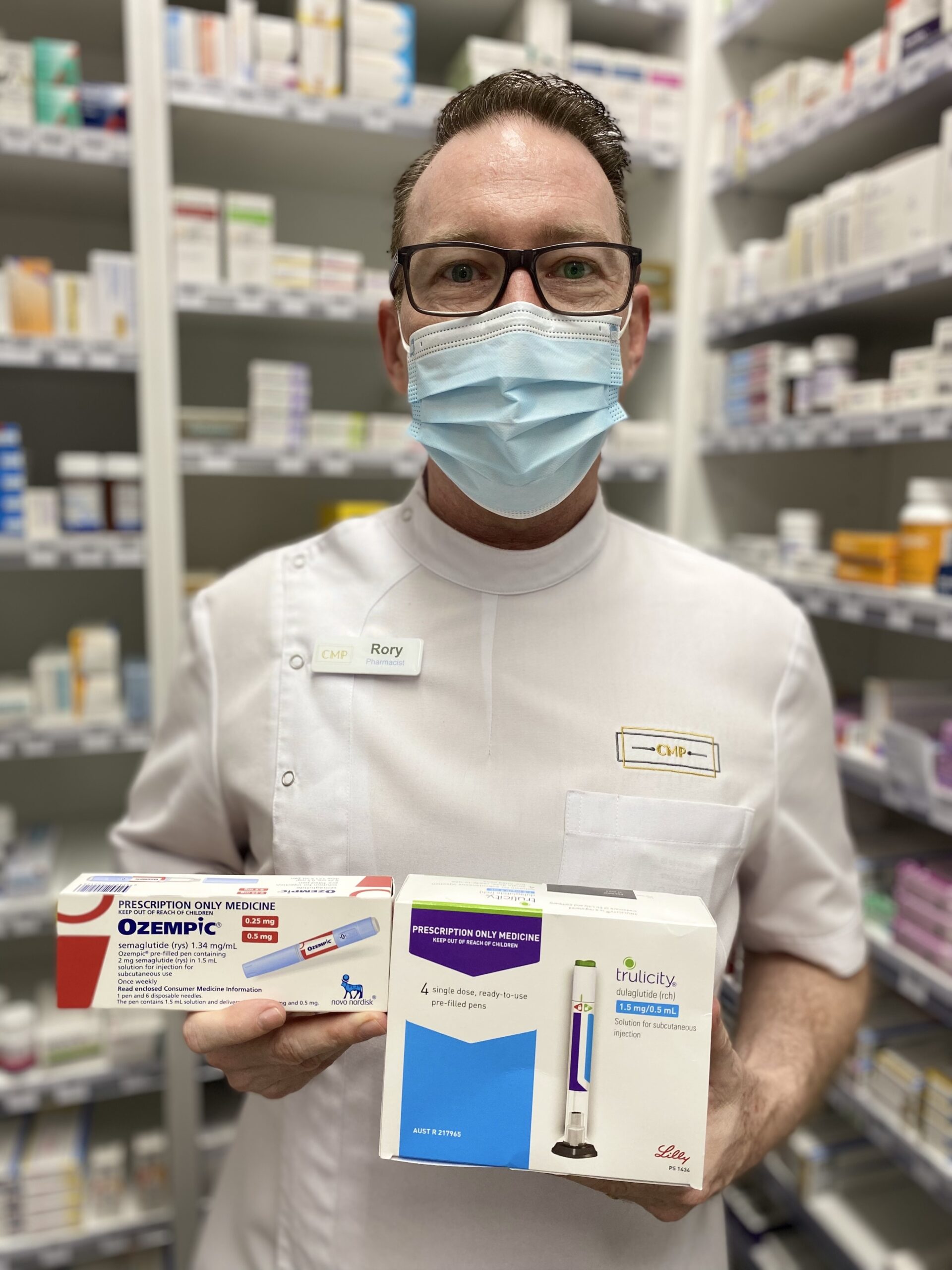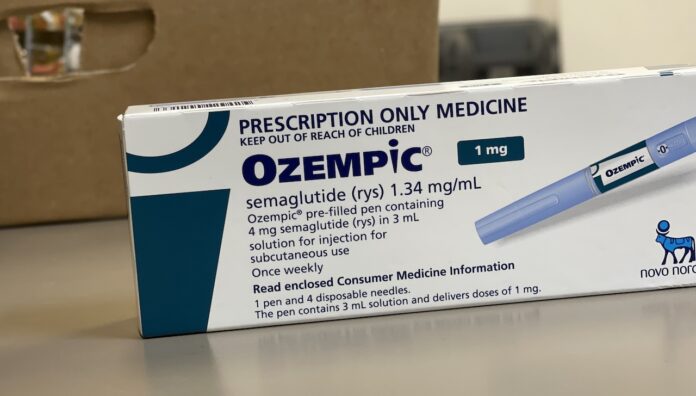Late last week, the Therapeutic Good Administration (TGA) announced there would be no semaglutide stock from mid-November 2022 until the end of March next year.
Locum pharmacist and credentialled diabetes educator (CDE) Rory Johnston MPS, based in Brisbane, said the shortage of semaglutide is having a ‘huge’ impact on patients.

‘It’s a significant class of medicine that’s become unavailable. At my pharmacy, we’re currently ringing people from August, saying we’ve only just got supply,’ he said. ‘There’s also been a knock-on effect through to [dulaglutide].’
In fact, in Mr Johnston’s experience, the shortage of dulaglutide is more severe.
‘At least with [semaglutide] we’re getting drip fed some of the lower dose starter packs every 3–4 weeks,’ he said. ‘But I haven’t seen dulaglutide at all for a while.’
Melbourne-based CDE Angelica Rostov MPS agrees that dulaglutide is increasingly hard to source due to the semaglutide shortage.
‘Doctors went from prescribing semaglutide to dulaglutide and now there is a shortage of that as well,’ she said.
This is further compounded by the fact there is only one strength of dulaglutide currently available in Australia.
‘With [semaglutide] you start from 0.25 mg, move to 0.5 mg and then 1 mg,’ she said. ‘[Dulaglutide] has only one concentration.’
While Ms Rostov said exenatide is an alternative glucagon-like peptide-1 (GLP-1) inhibitor that helps to lower blood sugar levels without promoting weight gain, AstraZeneca announced today (9 November) that this medicine will soon be off the market.
Discontinuation of the medicine was originally planned on 31 May 2023. However, unprecedented demand for exenatide has depleted the remaining stock, with discontinuation now set for 1 December 2022.
Rural and remote patients impacted by shortage
Donna Itzstein MPS is a fly-in CDE who has face-to-face consultations with patients in outback Queensland.
A substantial number of her patients transitioned to semaglutide prior to the shortage, especially if they were slightly above their weight target.
‘They have had no supply [of semaglutide] for many months,’ she said. ‘There’s a feeling that in west Queensland, they’re getting the leftovers.’
While patients are feeling frustrated, Ms Itzstein has noticed that the semaglutide and dulaglutide shortages are also affecting their blood glucose levels.
‘[Semaglutide] and [dulaglutide] have the largest impact, apart from insulin, on blood glucose levels,’ she said.
‘Semaglutide also helps people to either maintain or lose weight, which is ultimately going to be a factor in people managing their diabetes.’
General practitioners are still writing prescriptions for the medicine and telling people to source supply wherever they can, Ms Itzstein said.
‘However, some GPs will write scripts for [dulaglutide] as well, so the person can wait for one or the other to come in,’ she said.
Working with patients and GPs
When patients with diabetes present to the pharmacy, and neither semaglutide or dulaglutide are in supply, Mr Johnston refers them back to their GP or endocrinologist.
As a CDE, he also suggests alternative therapies for patients to consider, including dipeptidyl peptidase-4 inhibitors (DPP-4 inhibitors).
‘They work on the same pharmaceutical mechanism as GLP-1 inhibitors, so a DPP-4 could be a suitable alternative until semaglutide is available,’ he said.
As there is an option to take the once-daily dose of DPP-4 inhibitors in a combined formulation with metformin (metformin/gliptin fixed-dose combinations), patients’ pill burden may not necessarily have to increase.
When advising prescribers on diabetes medicines that are currently available, Ms Itzstein also suggests sodium-glucose co-transporter-2 (SGLT2) inhibitors.
‘They are quite useful, not only with blood glucose levels, but for reducing the risk of cardiovascular disease and slowing the decline of renal function – both of which are very important in type 2 diabetes,’ she said.
Alternative therapies for weight loss
In September 2022, the TGA requested healthcare professionals prioritise supplies of semaglutide for patients with type 2 diabetes. The Ozempic brand has only been approved by the TGA for lowering blood sugar in adults with type 2 diabetes.
Mr Johnston advises people who have been prescribed semaglutide for weight loss to avoid initiating it.
‘[I’ll say] “there’s no use getting a script filled this month when you can’t find another for 2–3 months,’ he said.
Some of the pharmacy’s weight-loss patients have also transitioned to liraglutide, a GLP-1 inhibitor that is TGA-indicated for weight management.
While in stock, the medicine is not covered under the Pharmaceutical Benefits Scheme and can cost approximately $387 for a supply.
Another therapeutic option for weight loss includes phentermine, however, this medicine comes with some significant contraindications.
‘[Phentermine] increases heart rate, so anyone who has any cardiovascular issues should be ruled out,’ Mr Johnston said.
With a new semaglutide brand approved by the TGA in early September, Mr Johnston is hoping the medicine, indicated specifically for weight loss, will have an impact when it becomes available.
‘It’s definitely going to take the pressure off Ozempic,’ he added.
Patient education
The theme for this year’s World Diabetes Day (14 November) is ‘education to protect tomorrow’. During medicine shortages, educating patients with diabetes about their medicines is more important than ever.
‘As a community pharmacist, I would recommend patients have a discussion with their GP about what the options are with regards to glycemia, and the main reason they were put on semaglutide,’ said Ms Itzstein.
‘We know that [semaglutide] is for type two diabetes and glycemia, but some GPs also want the patient to lose weight.’
In that case, an alternative therapy to lower blood glucose levels along with a referral to a dietitian and an exercise physiologist might be the right solution.
When counselling people living with diabetes, Ms Itzstein explains from the get-go what diabetes is and how their medicine works.
‘I believe that knowledge empowers them to know why they are taking this medication, stay compliant, and understand what the short- and long-term outcomes are,’ she said.
First-line antibiotic shortage
Meanwhile, the TGA announced last week that another critical medicine is in dangerously short supply across the country.
‘We can’t get amoxicillin at all at the moment, or any variant of it,’ said Mr Johnston.
‘That is a conversation I am having with doctors, [asking] “What’s your second-choice antibiotic?”’
The shortage of amoxicillin was first flagged in July, with the TGA indicating an unexpected increase in demand is to blame. However, the regulatory authority is working on a solution.
‘Many of the products in shortage have other brands, strengths, or alternative substitutes with similar spectrum of activity available,’ it said in a statement.
‘To minimise the impact of the shortages, the TGA has approved the importation and supply of 10 overseas-registered amoxicillin products.’
Don’t miss the Diabetes Essential CPE in the December/January issue of Australian Pharmacist for further advice on injectable medicines for diabetes, including semaglutide.






 ‘We’re increasingly seeing incidents where alert fatigue has been identified as a contributing factor. It’s not that there wasn’t an alert in place, but that it was lost among the other alerts the clinician saw,’ Prof Baysari says.
‘We’re increasingly seeing incidents where alert fatigue has been identified as a contributing factor. It’s not that there wasn’t an alert in place, but that it was lost among the other alerts the clinician saw,’ Prof Baysari says.








